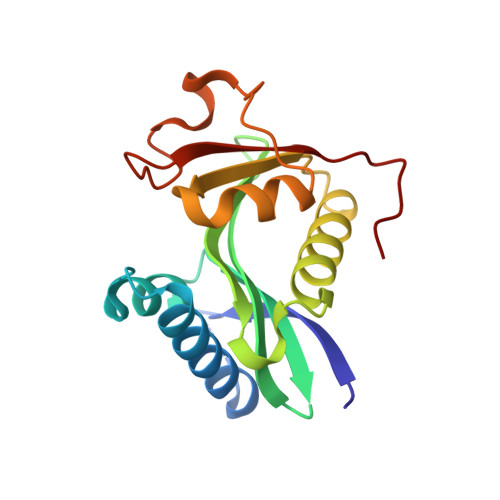Molecular Basis of KAT2A Selecting Acyl-CoA Cofactors for Histone Modifications.
Li, S., Li, N., He, J., Zhou, R., Lu, Z., Tao, Y.J., Guo, Y.R., Wang, Y.(2023) Research (Wash D C) 6: 0109-0109
- PubMed: 37040526
- DOI: https://doi.org/10.34133/research.0109
- Primary Citation of Related Structures:
8H65, 8H66, 8H6C, 8H6D - PubMed Abstract:
Emerging discoveries about undocumented acyltransferase activities of known histone acetyltransferases (HATs) advance our understandings in the regulation of histone modifications. However, the molecular basis of HATs selecting acyl coenzyme A (acyl-CoA) substrates for histone modification is less known. We here report that lysine acetyltransferase 2A (KAT2A) as an illustrative instance of HATs can selectively utilize acetyl-CoA, propionyl-CoA, butyryl-CoA, and succinyl-CoA to directly deposit 18 histone acylation hallmarks in nucleosome. By analyzing the co-crystal structures of the catalytic domain of KAT2A in complex with acetyl-CoA, propionyl-CoA, butyryl-CoA, malonyl-CoA, succinyl-CoA, and glutaryl-CoA, we conclude that the alternative substrate-binding pocket of KAT2A and the length and electrostatic features of the acyl chain cooperatively determine the selection of the acyl-CoA substrates by KAT2A. This study reveals the molecular basis underlying the pluripotency of HATs that selectively install acylation hallmarks in nucleosomes, which might serve as instrumental mechanism to precisely regulate histone acylation profiles in cells.
Organizational Affiliation:
Department of Biochemistry and Molecular Biology, School of Basic Medicine, Tongji Medical College, Huazhong University of Science and Technology, Wuhan, Hubei 430030, China.















